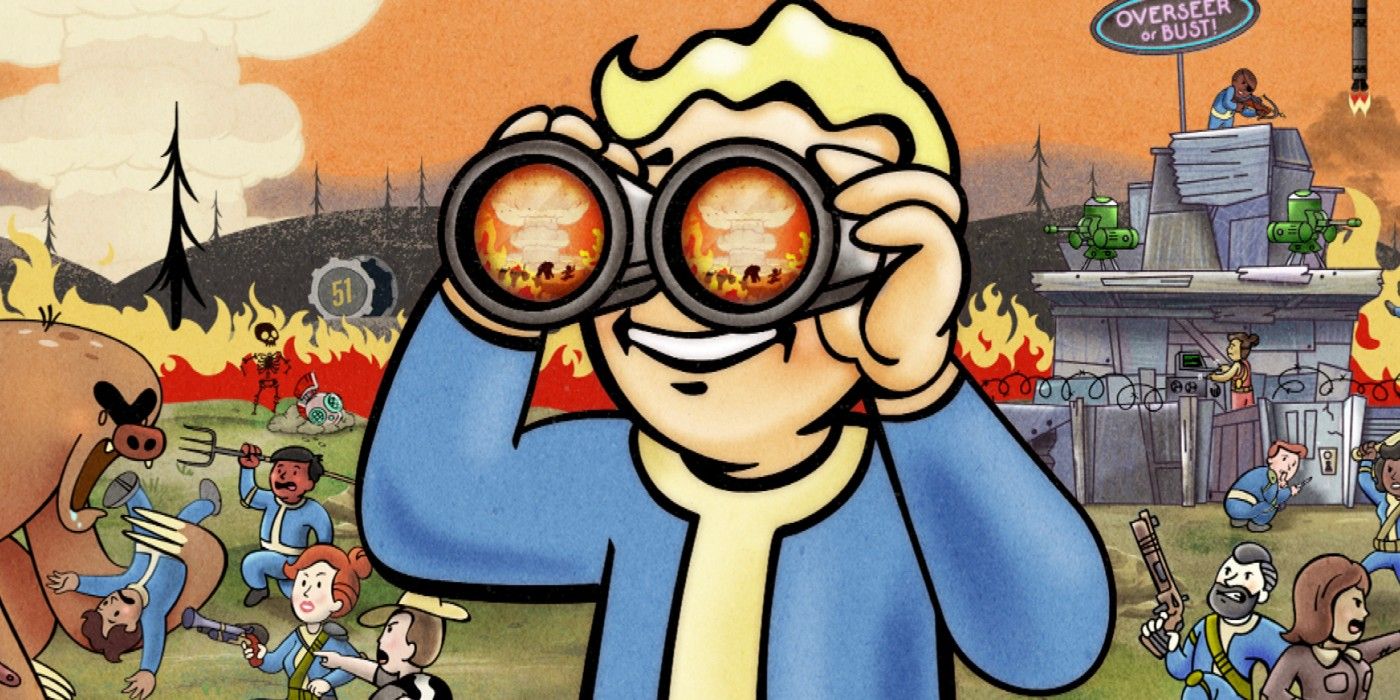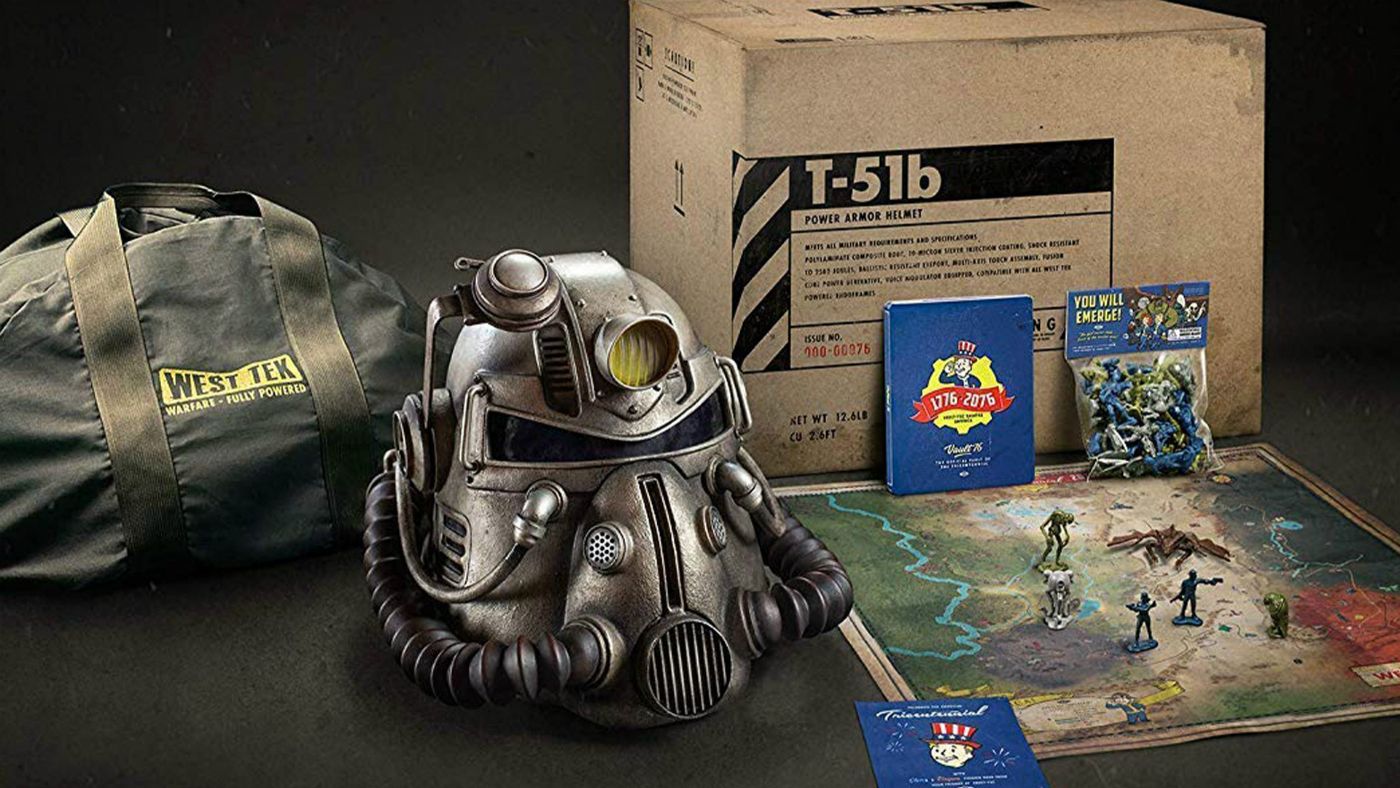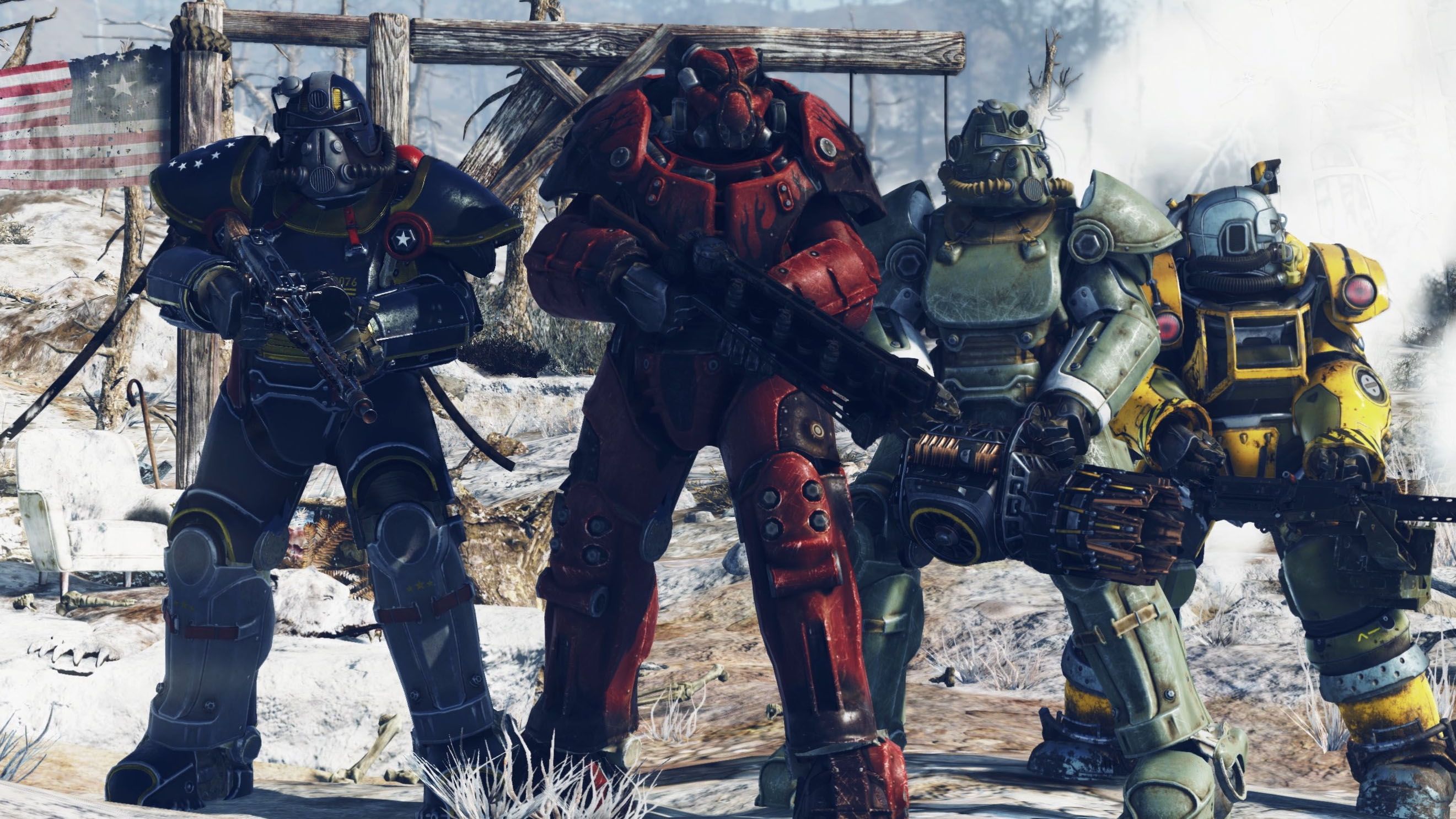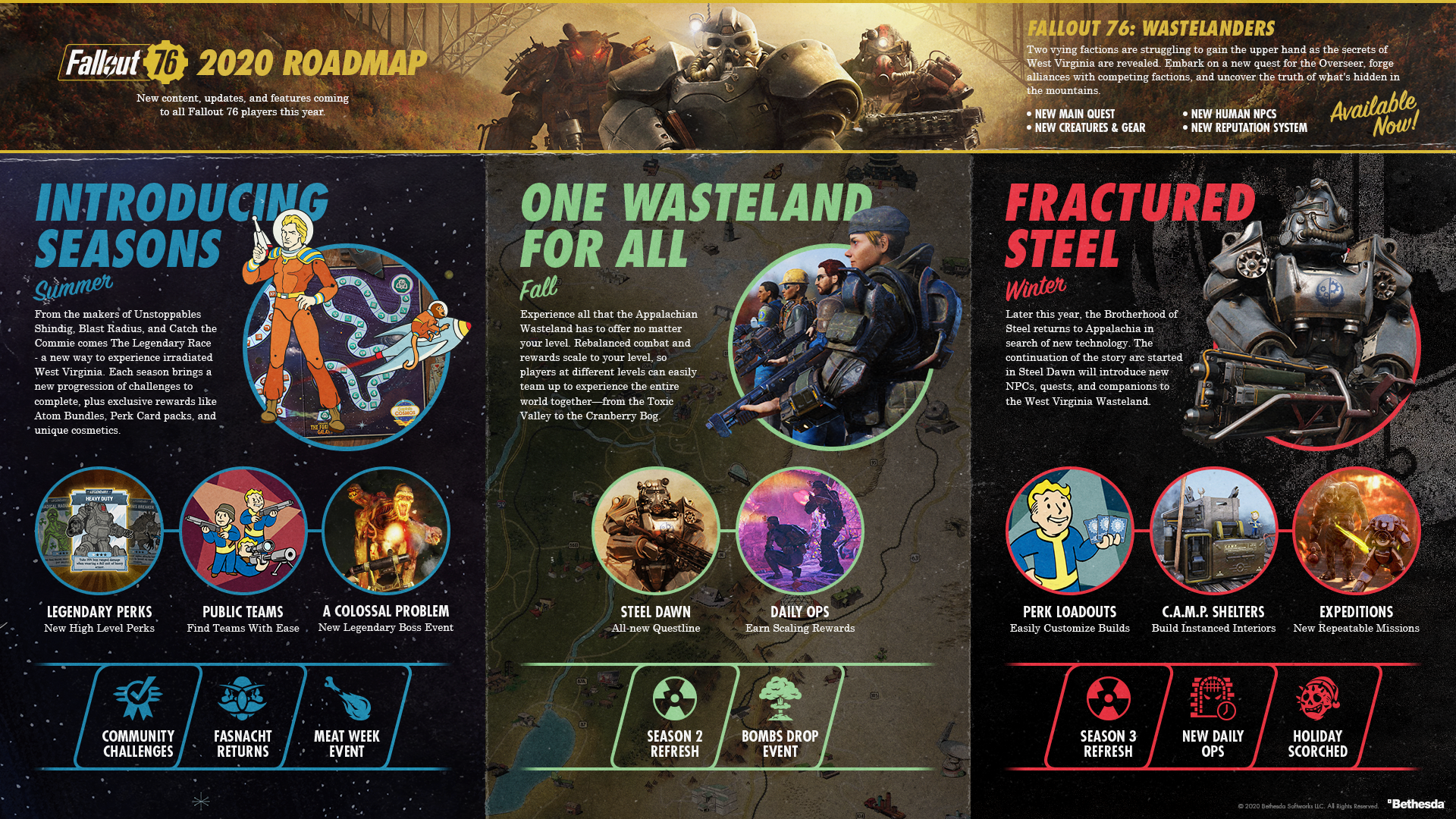The current state of one of gaming's biggest disappointments in history, Fallout 76, has a pretty confusing timeline, and with so much that's happened since its announcement, it's hard for even a Fallout fan to keep track. After six games and one spin-off, Fallout grounded itself as one of the best series ever created, and has clearly become a classic in the eyes of the gaming community. But since Fallout 76's announcement back in June of 2018 at E3, people quickly began to speculate that this game wasn't going to be the same.
The Fallout series is a staple in the video game industry, with some Fallout fans considering Fallout: New Vegas one of the best RPG's of all time. When Bethesda announced Fallout 4 in 2015, with an extremely in-fashion 'Please Stand By' screen playing on a loop, the internet went insane. Bethesda gave 2015 E3 attendees an in-depth view of the fifth game in the series, and was met with pretty positive feedback. In October of that same year, Bethesda announced that Fallout 4 had gone Gold, with copies still selling years later.
Fans didn't have to wait long for an announcement about the next installment in the series, as Todd Howard once again graced the E3 stage in 2018 to announce Fallout 76. But excitement quickly turned to confusion when Todd strolled back and forth along a stage placed directly in the middle of the room, cutting the audience in half and continuously turning to talk to both sides of the room at once. Fallout 76 wouldn't be like it's predecessors, he said, and instead would take a multiplayer approach. This sixth game in the Fallout series would be a huge divergence from the single-player RPG fans have grown to know and love. Mixed reviews of the concept itself began pouring in online, and the studio behind some of gaming's most beloved titles was staring down a black hole that they unknowingly opened.
The Beginning of Fallout 76's End
The beginning of Fallout 76's downfall started the moment Bethesda announced all of the major differences it would have when compared with Fallout 4. Although there was a bit of good news, such as the map being four times bigger than Fallout 4's, and the game sported an upgraded color palette, fans couldn't get over how a single-player open world RPG was supposed to work as a multiplayer title. Howard assured players that there wouldn't be any more than 10-20 players on a map at a time, and that there would be enough world for players to explore without always running into someone else.
The next fall from grace came from the extremely late B.E.T.A. release, one that did not give the company enough time to take in feedback and fix everything before Fallout 76's November street date. The Break-It Early Test Application was released just one month away from the game's official launch, and players speculated that the short B.E.T.A. time frame wouldn't allow the time needed to fix major bugs in Fallout 76. Those people were right.
After the disastrous B.E.T.A. test, players were dissatisfied to learn that on launch day they would be paying a full $60 for a (still) broken game. Bethesda promised players that they would be continuously fixing the bugs as they went along, and that if players stuck around long enough, they would eventually play a less-than-broken product. The first major patch was a whooping 48 GB that included mostly bug fixes. Some of the major bugs at launch included, but weren't limited to, server crashes, frame rate issues, and extreme clipping. Sales were poor, and so were Fallout 76's reviews.
Fallout 76's Disappointments Didn't End With The Game
The bad news didn't stop with Fallout 76's gameplay itself. During E3, Todd Howard also announced a collector's edition that would release for Fallout 76, called the Power Armor Edition. Much like the Pip-Boy Edition for Fallout 4, which sold-out very quickly, the Power Armor Edition came with a life-sized T-51B power armor helmet replica that was meant to light up and be worn. The edition also came with a few other goodies, including Fallout figurines, a West-Tek canvas tote, and a map of West Virginia "that glows in the f*cking dark," according to Todd Howard.
Unfortunately, not only did the collector's editions of Fallout 76 ship late, but they did not include a West-Tek canvas tote, and fans ended up receiving a bag made of nylon; a cheaper, thinner material not previously advertised. Players questioned the false advertising, and after much backlash from the community, Bethesda opened up support tickets for those who purchased the collector's edition to input their personal information to be mailed a replacement bag. That did not go well for the company either, and compromising, personal player information somehow leaked for the public to see. In June of 2019, over six months later, players finally started receiving their canvas bags.
The controversies still didn't stop there. Along with the false canvas bags, Bethesda partnered up with Silver Screen Bottling Company to create a real-life alcohol that would be a replica of Fallout's own Nuka-Cola Dark, a rum created by the famous in-game soda company. During the launch of Fallout 4, Bethesda paired up with Jones Soda Company, creating a similar version of Nuka-Cola Quantum. This drink was made in limited quantities and ended up selling out much faster than expected. Pre-orders started months before the game's release, and people were excited to try out Nuka-Dark. It wouldn't be a Fallout 76 product if it didn't come with disappointment and delays, and after 76's release, customers did not hear an update from the bottling company until late December. Once packages finally shipped out, two months after they were planned to, customers were dissatisfied, again, to learn that the actual Nuka-Dark rum was encased inside of a huge plastic shell that made the rum extremely hard to pour and cheap to look at. The rum was also reportedly harsh tasting.
Where Fallout 76 Currently Stands
Even with controversy after controversy, Bethesda continued to add new content to Fallout 76 and tried to improve the bugs and messes along the way. At E3 2019, Todd Howard announced the arrival of Nuclear Winter, a 7 GB B.E.T.A. launch of a battle royale-type feature that allowed players to battle with other players to see who could survive. With other games such as Apex Legends and Fortnite, two extremely popular battle royale games, beginning to slowly take over, Bethesda knew it had to find a way to appeal to the current battle royale popularity. Surprisingly, after the release of Nuclear Winter, reviews were not overly-negative about the update, but instead reported that the game embraced its battle royale style while still feeling like a traditional Fallout game.
After a year of fans criticizing the lack of story plaguing West Virginia's wasteland, Bethesda announced that they would be bringing back NPCs to roam the country roads. The Wastelanders update arrived on April 7th of 2020, adding in a skew of characters and story lines for players to follow. Players began to report that it "felt more like" an actual Fallout game now, almost two years after the game's initial release, thanks to the inclusion of NPCs, new stories, and new locations. The Wastelanders update undeniably improved Fallout 76, and some players who had initially been turned off finally began to enjoy the game. Although Fallout 76 still comes with a microtransaction-filled and extremely expensive in-game store, Bethesda has tried to lower item prices and give out free items for everyone to download.
Fallout 76's Future Includes a Seasons Road Map
Fallout 76's future includes a mapped out plan for the rest of 2020 that shows what Bethesda has lined up for the game, so players know exactly what to expect. History tends to repeat itself, and this has already proven to be true for Fallout 76 once again. The Fasnacht event for the first Fallout season, taking place during the summer of 2020, turned out to be riddled with bugs, and instead of allowing players to experience a fun parade event event the entire experience turned out to be simply boring. The Wendigo Colossus was another addition that came with the summer season, and it also didn't immediately wow players.
Fallout 76's summer was mostly about the The Legendary Race, a progressions road map that allowed players to defeat challenges and earn specific rewards depending on their progression through a virtual game board. Unfortunately, many players didn't understand the hype, and many in Fallout 76's community basically chalked it up to a way of visualizing a system already present within the game.
Currently, Fallout players will agree that the game has come a long way from where it began back in 2018, but didn't get here without a million bumps and bruises along the way. Bethesda should continue to look at games that also had terrible launches, but were eventually made great with continuous work, like Rainbow Six: Siege. The game still has plans for improvement and new updates for the future, and players can still look forward to the fall and winter seasons which will include the fan-favorite Brotherhood of Steel faction. Bethesda has certainly taken a fall with Fallout 76, and some fans of the company may rightly question whether they will be able to pick themselves back up in the future.




